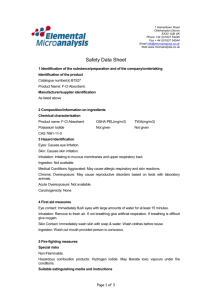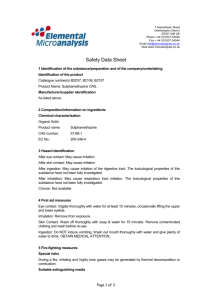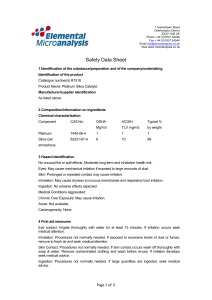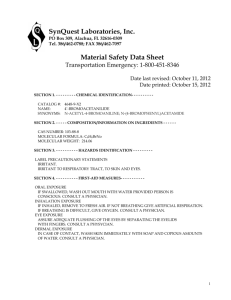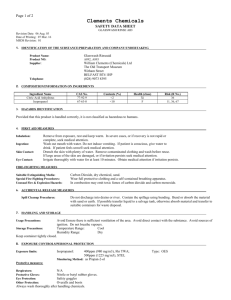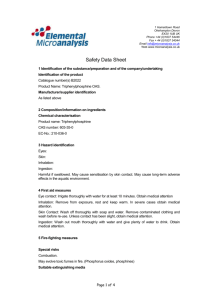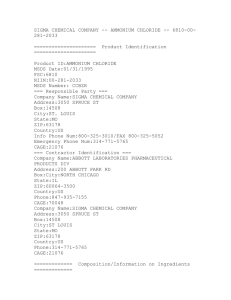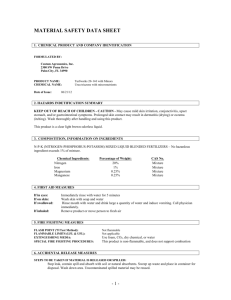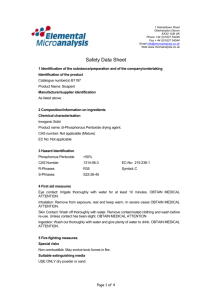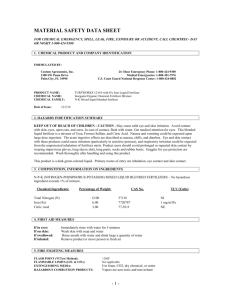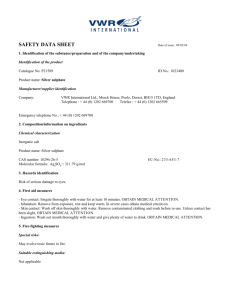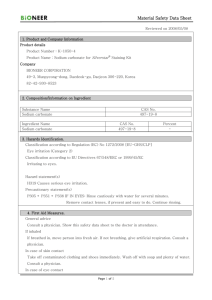Stearic Acid - EA Consumables
advertisement
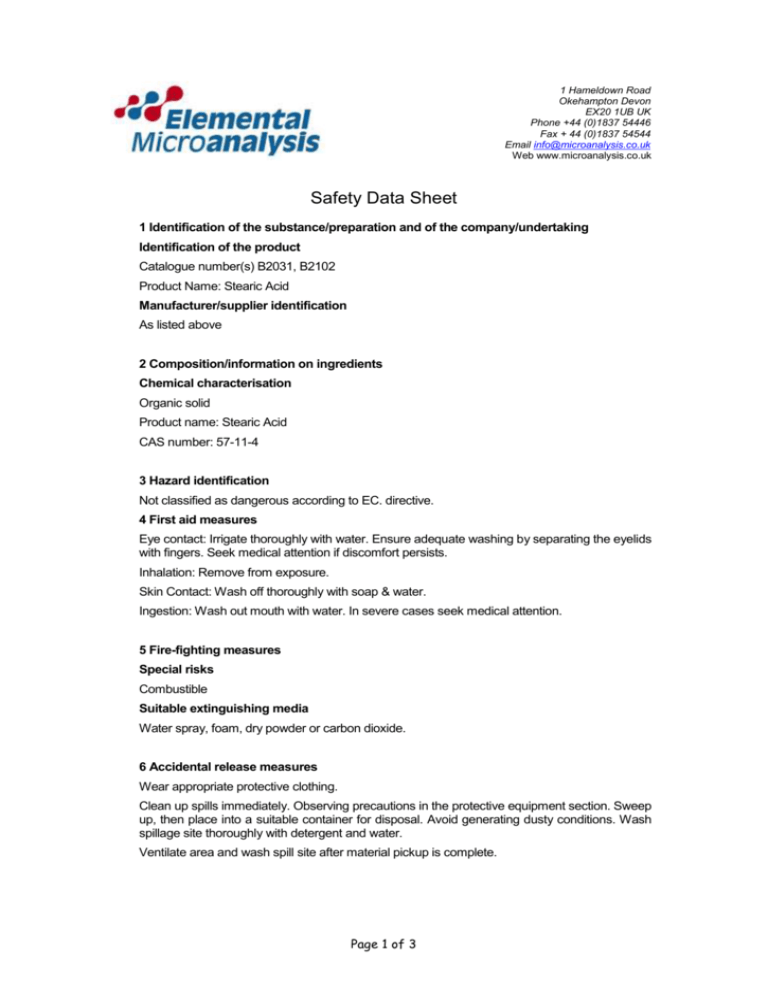
1 Hameldown Road Okehampton Devon EX20 1UB UK Phone +44 (0)1837 54446 Fax + 44 (0)1837 54544 Email info@microanalysis.co.uk Web www.microanalysis.co.uk Safety Data Sheet 1 Identification of the substance/preparation and of the company/undertaking Identification of the product Catalogue number(s) B2031, B2102 Product Name: Stearic Acid Manufacturer/supplier identification As listed above 2 Composition/information on ingredients Chemical characterisation Organic solid Product name: Stearic Acid CAS number: 57-11-4 3 Hazard identification Not classified as dangerous according to EC. directive. 4 First aid measures Eye contact: Irrigate thoroughly with water. Ensure adequate washing by separating the eyelids with fingers. Seek medical attention if discomfort persists. Inhalation: Remove from exposure. Skin Contact: Wash off thoroughly with soap & water. Ingestion: Wash out mouth with water. In severe cases seek medical attention. 5 Fire-fighting measures Special risks Combustible Suitable extinguishing media Water spray, foam, dry powder or carbon dioxide. 6 Accidental release measures Wear appropriate protective clothing. Clean up spills immediately. Observing precautions in the protective equipment section. Sweep up, then place into a suitable container for disposal. Avoid generating dusty conditions. Wash spillage site thoroughly with detergent and water. Ventilate area and wash spill site after material pickup is complete. Page 1 of 3 7 Handling and storage Handling: Do not breath dust. Change contaminated clothing. Wash hands after working with substance. Storage: Store in a tightly closed container. Store in a cool, dry area away from incompatible substances. 8 Exposure controls, personal protection As appropriate to the situation and the quantity handled. Respirator: Dust respirator. Ventilation: Extraction Hood. Gloves: Rubber or plastic. Eye protection: Safety goggles Other precautions. Plastic apron, sleeves, boots – if handling large quantities. 9 Physical and chemical properties Form: Solid. Colour: White Odour: Almost odourless Melting Temperature: 70c Boiling Temperature: 361c Vapour pressure: 1mmHg, 174c -Density 9.80 Density (g/ml): 0.84 Flash point: 196c Solubility in Water: Inmiscible or insoluble. No further data 10 Stability and Reactivity: Stable Conditions to avoid: May react with oxidising materials. 11 Toxicological information Naturally occurring substance. After ingestion: Slightly toxic After skin contact: Slight irritation After eye contact: Slight irritation After inhalation of dust: Irritation symptoms in the respiratory tract. Further data No Data Has been found to cause cancer in laboratory animals. No evidence of mutagenic or teratogenic effects. Page 2 of 3 12 Ecological information Biological degradability: Good (T ½: 3-13 days) Fish toxicity: LC50 (oryzias latipes) (Sodium stearate): 125mg/l/96h Adverse ecological effects cannot be excluded in the event of improper handling or disposal. 13 Disposal considerations Chemical residues are generally classified as special waste, and as such are covered by regulations which vary according to location. Contact your local waste disposal authority for advice, or pass to a chemical disposal company. 14 Transport information Not regulated. (IATA, IMO & RID/ADR) Hazard class – none UN number – not listed 15 Regulatory information Labelling according to EC directives Symbol: S-phrases: R-phrases: R99 Not classified as dangerous according to EC directives EC-No.: 200-313-4-1 Local regulations UK Exposure Limits: None assigned 16 Other information Reason for alteration: n/a Revision Date: 30th July 03 Revision number: 0 (First issue) Page 3 of 3
